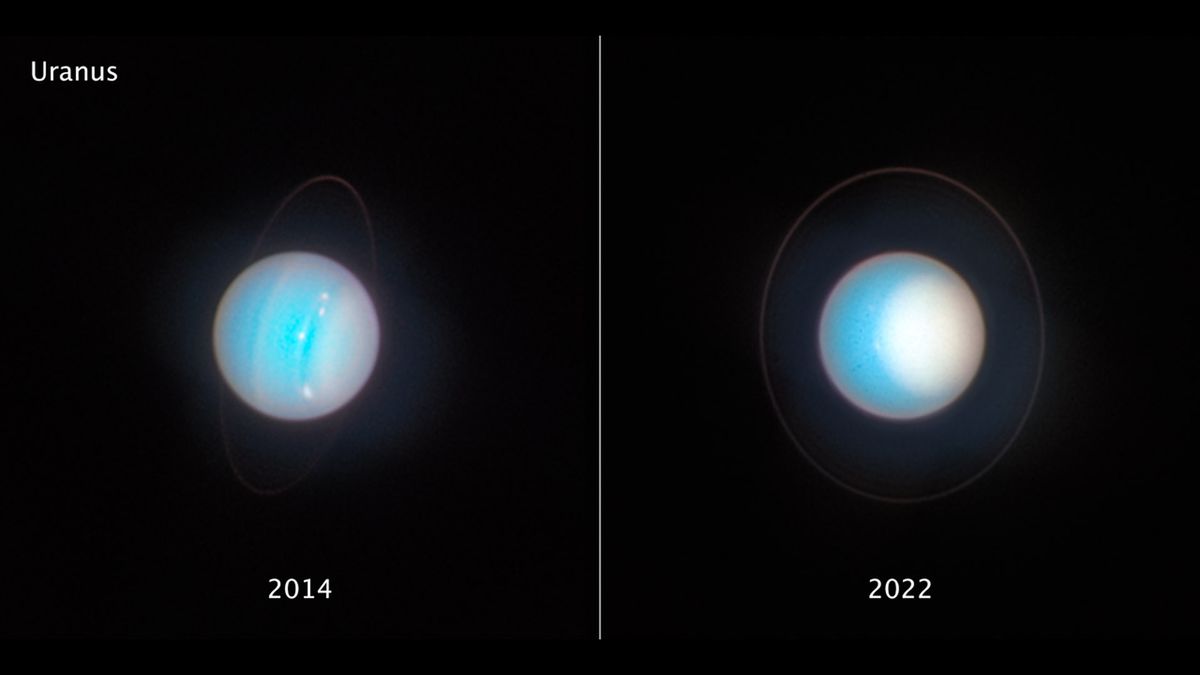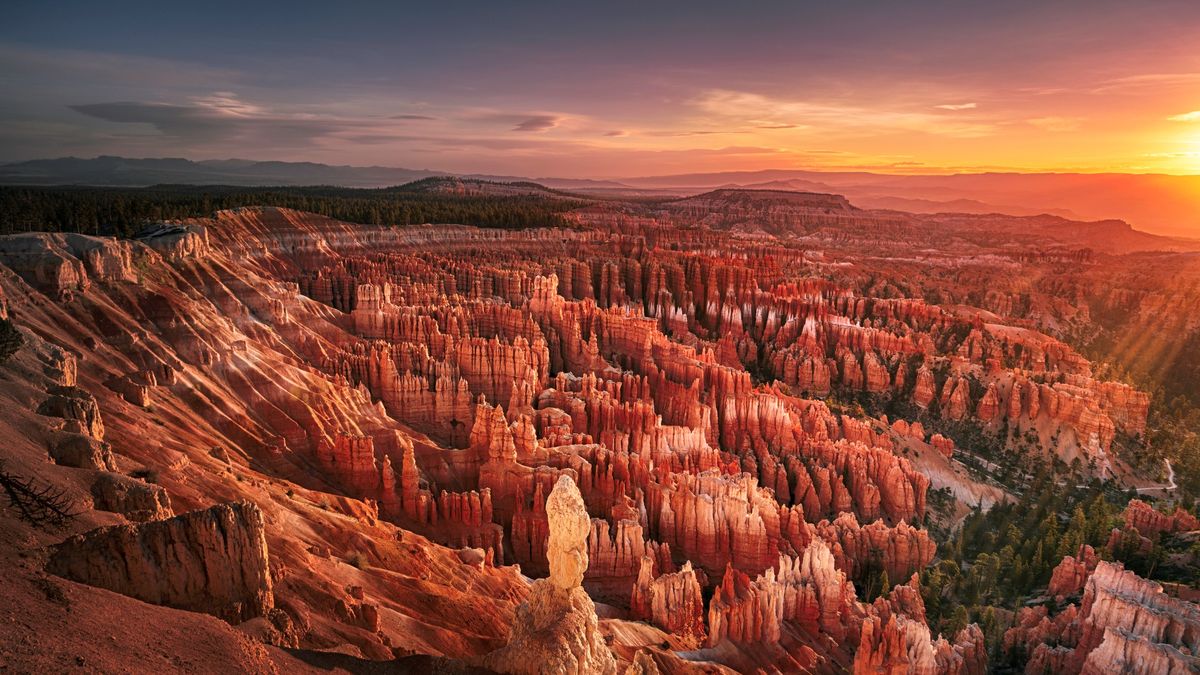New photos of Uranus and Jupiter taken by the Hubble House Telescope reveal how climate slowly adjustments on these big, distant planets.
Not like Earthly climate that adjustments from everyday, atmospheric situations on planets within the outer solar system are pretty steady. These planets obtain little or no daylight and take years to a long time to finish one orbit across the sun. Nonetheless, when scientists evaluate Hubble Space Telescope photos of those planets captured a number of years aside, they see that their atmospheres are, in reality, alive.
Hubble photos of the ice big Uranus taken in 2014 and 2022, for instance, reveal {that a} cap of icy smog is rising over the planet’s north pole because it strikes towards its northern summer time season. Uranus’ seasons final over 20 years every, as one 12 months on the planet lasts a staggering 87 Earth years.
Associated: Two moons of Uranus may have active subsurface oceans
The white cap seen within the 2022 picture is fabricated from what the Space Telescope Science Institute describes (opens in new tab) as “photochemical haze” just like the air-pollution-rich smog that varieties above main cities on Earth. Hubble has been monitoring the formation of this cover for a number of years and located it was getting more and more brighter. Scientists are attempting to know the chemical processes driving the formation of this cover, however information concerning the distant Uranus is restricted as a result of lengthy period of its seasons. The planet will attain its subsequent summer time solstice in 2028. The final time astronomers have been capable of observe the planet throughout this a part of its 12 months was within the Nineteen Forties.
Variations between Uranus’ seasons are believed to be excessive, because the planet rotates round an axis that’s tilted on a mere 8-degree angle off its orbital airplane. Meaning the planet nearly rolls on its aspect. Because of this, Uranus’ two hemispheres obtain barely any sunshine throughout their respective winter intervals.
Photos of the photo voltaic system’s largest planet, Jupiter, additionally revealed attention-grabbing climate traits. Within the newest Hubble photos taken earlier this 12 months, the fuel big’s well-known Great Red Spot is at its smallest since common commentary started 150 years in the past. The Nice Crimson Spot is a huge storm presently about twice as vast as Earth that swirls within the planet’s southern hemisphere with wind speeds round its perimeter reaching a whopping 270 to 425 mph (430 to 680 kph). However whereas this trademark storm could also be weakening, the Hubble observations present {that a} new big storm could also be forming north of Jupiter’s equator.
Astronomers name the brand new stormy area a “vortex road,” because it consists of a row of interlocking cyclones that spin in alternating instructions. If these storms have been to merge, they may create a megastorm even better than the Nice Crimson Spot. Scientists, nonetheless, suppose that this merger is kind of unlikely, the House Telescope Science Institute, which manages Hubble’s science operations, mentioned within the assertion.
Hubble has been observing Jupiter for the reason that telescope reached Earth orbit within the early Nineties, and it wasn’t till the final decade that scientists detected the formation of the cyclones making up the “vortex road.”
Comply with Tereza Pultarova on Twitter @TerezaPultarova (opens in new tab). Comply with us on Twitter @Spacedotcom (opens in new tab) and on Facebook (opens in new tab).


